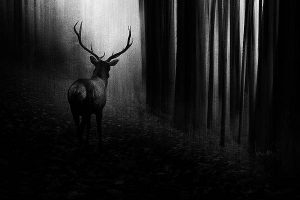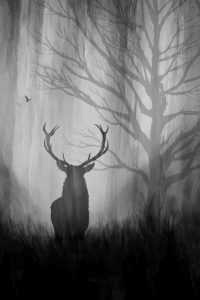 Samantha Hunt’s “Beast” depicts the complications of married life through the use of anamorphic qualities, which highlight the topics of inner conflict, longing, desire, and infidelity. Our narrator describes her nights beside her husband as she morphs into a deer, which can be interpreted as her animalistic tendencies from actively committing adultery taking psychical shape. Deer are known to inhabit populated, urban areas. They are oftentimes killed on highways. This may tie back to the narrator’s situation in which she finds herself conducting actions that could damage her life. She is out of place. She is not in the right habitat.
Samantha Hunt’s “Beast” depicts the complications of married life through the use of anamorphic qualities, which highlight the topics of inner conflict, longing, desire, and infidelity. Our narrator describes her nights beside her husband as she morphs into a deer, which can be interpreted as her animalistic tendencies from actively committing adultery taking psychical shape. Deer are known to inhabit populated, urban areas. They are oftentimes killed on highways. This may tie back to the narrator’s situation in which she finds herself conducting actions that could damage her life. She is out of place. She is not in the right habitat.
She has underlying feelings of guilt and shame for her actions, as her husband is a good and dutiful man. The need to tell him that she turns into a deer at night might be her version of confessing to cheating; in both scenarios, her husband would not be understanding of her situation. She teeters on the edge of admitting to a part of herself that she fears will ruin her marriage. She feels a sense of isolation as a deer in their bedroom, unable to share her feelings with the one person in life who is supposed to be there with her through anything and everything. When they are two different species, there is a barrier, a divide, that secludes not only her but her husband as well. They are in two separate worlds at this point in the story.
Later, we learn that he t oo morphs into a deer at night. This unexpectedness portrays the idea that while we are so wrapped up in our own situations, people around us may be going through similar things. Perhaps her husband has cheated on her too, or has been dishonest, or has acted in beastly ways without her knowing. They now share this.
oo morphs into a deer at night. This unexpectedness portrays the idea that while we are so wrapped up in our own situations, people around us may be going through similar things. Perhaps her husband has cheated on her too, or has been dishonest, or has acted in beastly ways without her knowing. They now share this.
As they leave behind their home and everything they’ve known of domestic life, they embark into the wild and are soon met with more deer. Their animalistic tendencies urge them to join the herd and disappear as individuals. Perhaps Hunt is trying to portray here that, at the end of the day, we all return to our roots as animals, and that ignoring this part of human nature only delays the inevitable. To conform to our nature allows us to be released from our complicated and intricate tragedies as human beings. The weight of emotions is heavy, and the simplicity of life is so very light. As they meld into the herd of creatures; they have severed their ties with their humanity. They return back to nature, forgetting the burden of materialistic feelings that serve no purpose other than to complicate life. They become beasts in their own right — although not in the sense that they are to be feared, or are wild and destructive, but rather something that is simply less human, less tortuous.